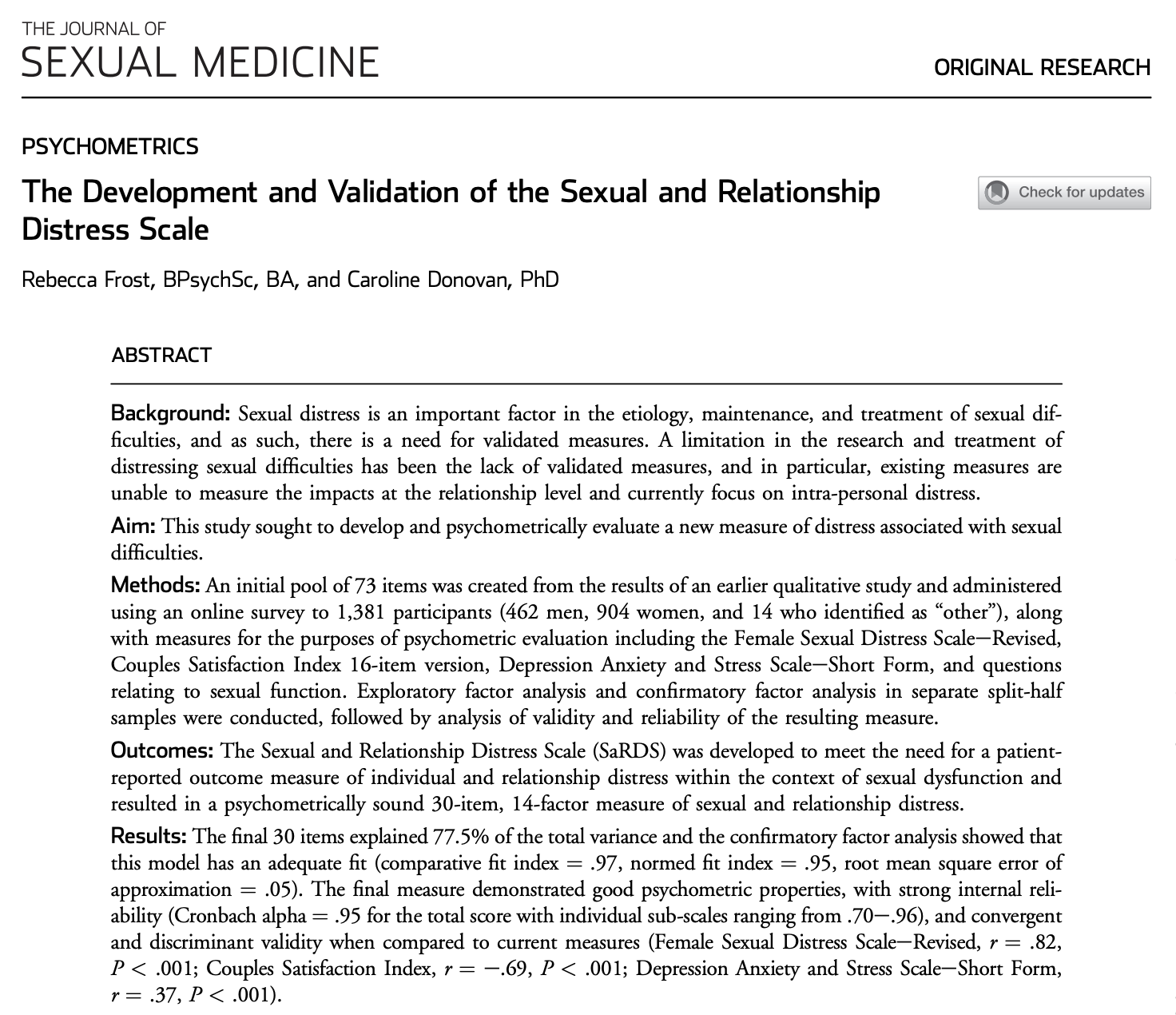
Purpose of the SaRDS
Write your awesome label here.
Download the SaRDS
This PDF version of the SaRDS includes scoring and psychometric information. Clinicians and researchers are welcome to use, duplicate and reformat this measure but please ask permission prior to making any changes.
History of the SaRDS
The SaRDS was developed following the results of a grounded theory study aiming to gain a deeper understanding of the distress and consequences experienced by individuals and their relationships where there is low or discrepant desire.
This study found that the distress is rarely about sexual needs and most participants reported feeling more distressed by emotions, fears, self-esteem and changes to the connection / intimacy in their relationships. It uncovered many potential treatment targets other than the dysfunction itself.
The SaRDS was developed to provide a tool allowing clinicians to quickly learn potential areas where distress and the effects of sexual dysfunction can be targeted in treatment. Since it was published it has been cited in numerous follow-on studies and included within the Handbook of Sexuality-Related Measures.
This study found that the distress is rarely about sexual needs and most participants reported feeling more distressed by emotions, fears, self-esteem and changes to the connection / intimacy in their relationships. It uncovered many potential treatment targets other than the dysfunction itself.
The SaRDS was developed to provide a tool allowing clinicians to quickly learn potential areas where distress and the effects of sexual dysfunction can be targeted in treatment. Since it was published it has been cited in numerous follow-on studies and included within the Handbook of Sexuality-Related Measures.

Dr Rebecca Frost
Rebecca is a Director of Benchmark Psychology and lead author of the SaRDS.
